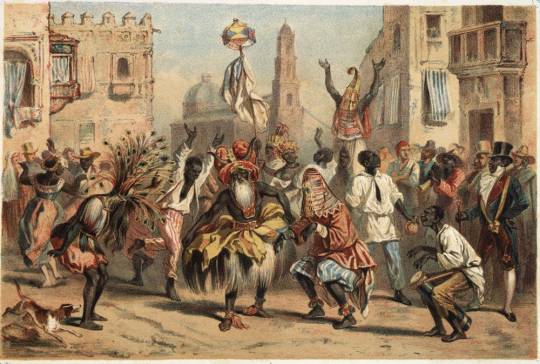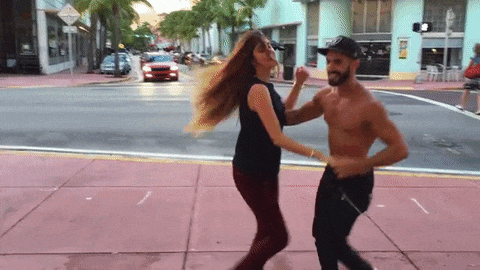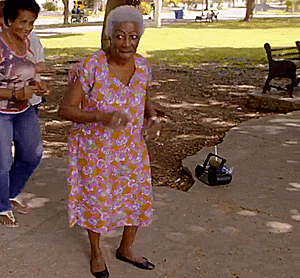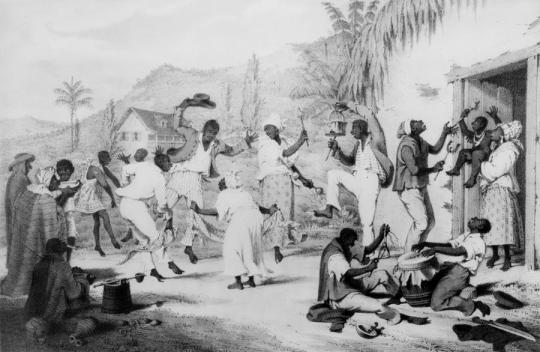#ekp
Explore tagged Tumblr posts
Text
Access to EKAMEV Portal for Pre-August 16 Pensioners
We are sharing the email sent to the Chief General Manager-in-Charge of the Department of Information Technology at the Reserve Bank of India (RBI) regarding EKAMEV—a centralized platform for accessing important information related to pensioners and retirement circulars. Unfortunately, pensioners who retired prior to August 2016 do not currently have access to this portal, creating an unnecessary…

View On WordPress
0 notes
Text

STABILIZATION PROTOCOL
#signal to noise#melanie castenada#ive posted too many song captions lately BUT if this image had a song caption it would be boogie brockhampton. god i love that. song#got to thining about the ekp and their method of interaction with the mar in opposition to the way others do#i think theres some vaugely control-esque stuff happening there#like mel has a way to 'stabilize' large sections of the mar that no one else does#and this is a bad thing. yay
55 notes
·
View notes
Text





EMMY KASBIT SPR 24
www.beau-gar.tumblr.com
#emmy kasbit#black man#black model#handsome#spring 2024#menswear#fashion#la sape#sapeurs#ekpe#dandy#sprezzatura#blackmalemodel#menswearfashion#male model#mensfashion#african models#model#fashion model#black models#men's fashion#parisian style#style inspiration#gq style#fashion style#style#mens style
47 notes
·
View notes
Text
What is the Ekpe Society?
The Ekpe society, also known as the Leopard Society, is a traditional fraternal secret society found primarily among the Ejaham, Efik, Ibibio, and Igbo peoples of southeastern Nigeria and western Cameroon. This society plays a significant role in the cultural, social, and political life of these communities. The society is known for its elaborate rituals, symbols, and hierarchical structure. The…

View On WordPress
7 notes
·
View notes
Text
i need to put eric back in signoise....ericccccc.....save me eric
#pers#he was always such a side character buti love himmmm. ericccccc. eric#hes technically around rn hes in the ekp somewhere i just need to give him more of a role
2 notes
·
View notes
Text
Ekpe (Leopard Society) Building: A Secret Society in West Africa
The architecture of Ekpe meeting houses is a captivating reflection of the profound cultural significance and deep-rooted traditions of the Ekpe society in West Africa. These meeting houses, known as “ekpe,” serve as the physical embodiment of the values, customs, and communal spirit of the Ekpe tradition, showcasing an architectural style that harmoniously blends with the natural…

View On WordPress
#African architecture#African History#Ekpe#Igbo architecture#West African#West African Architecture#West African history
0 notes
Text
image id: a screenshot of orginization 13 from kingdom hearts. end id
each of my homies holds a small fragment of my soul so that i may never die so long as the squad still lives
2K notes
·
View notes
Text

IM GONNA FUCKING EXPLOD E THE LAST PAR T KILLEDME
0 notes
Text
RBI Retirees’ Portal - New EKP launched
the Department of Information Technology (DIT) Central Office, who had already been working on it, has now advised about the launch of a New EKP portal for those who are without the RBI Email ID i. e. (pre-April 16) retirees.
As requested in our earlier post, the Department of Information Technology (DIT) Central Office, who had already been working on it, has now advised about the launch of a New EKP portal for those who are without the RBI Email ID i. e. (pre-April 16) retirees. DIT has, now, issued instructions to enable such retirees to access the Retirees’ Portal of New EKP.Follow the Steps given below to access…

View On WordPress
0 notes
Text

Long before it arose in New York City and became an influential style of music around the world, salsa music has its seeds in African rhythms and traditions that came to the Caribbean through the slave trade. Centuries of enslavement caused many cultural changes in Cuba, including the music that led to salsa.

Some people know Bobby Day’s 1958 “Rockin’ Robin” or Michael Jackson’s remake but the origin of the song goes back to the days of slavery.
The majority of the Africans that were enslaved and brought to the Americas were of West African descent where the drum was used as a form of communication. In the Americas, enslaved Africans used the drum in the same way — communicating with the enslaved on distant plantations and ultimately planning uprising.
The enslavers caught wind of this and enacted a ban.
It is absolutely necessary to the safety of this Province, that all due care be taken to restrain Negroes from using or keeping of drums, which may call together or give sign or notice to one another of their wicked designs and purposes. — Slave Code of South Carolina, Article 36
That ban went down in 1740 and soon spread throughout Colonial America.
But the beat is in the heart of the African.
We soon found other ways to imitate the sound of the drum; stomping, playing spoons, washboards, or anything other household item. We also “slapped Juba” or played “hambone” where the body became an instrument where the player slaps their thighs and chest for the drum beat. (How did young boys in 1980s Park Hill, Denver know “Hambone?”)
Although we kept the beat, we lost the tradition, a cultural marker snatched away from us.

While the American enslaver worked feverishly to destroy any vestige of African culture, the Spanish enslaver of Cuba felt that it was in his best interest to allow the enslaved African to maintain his culture. In support of that, the Spanish allowed the Africans to organize Cabildos (or social groups) based on their nation of origin. Thus you had the Abakua (or Ekpe) from the nations known as Nigeria and Cameroon, the Madinga (or Malinke) from Sierre Leone, etc.
Our focus is primarily on the Lucumi, the Cabildo founded for the Yoruba of Benin and Nigeria. This lineage would be the cornerstone and origin point for what is now called “Salsa.” And what is this “Salsa?”

When we spoke of the drum being forbidden among the enslaved Africans in America, we forgot to mention that there was one place that didn’t enact that ban. That place was the port city of New Orleans, Louisiana — some even call New Orleans the Northernmost Caribbean city.
Similar in the way that the Spanish allowed for Cabildos in Cuba, the Louisiana enslavers permitted Sundays off and were okay with the dance and celebration so long as the enslaved African did so outside of the city limits in a place called Place des Negres (eventually known as Congo Square).
After the Civil War, Africans in America were able to get a hold of surplus brass instruments and shortly thereafter began composing music based on the popular music in the Caribbean at the time, the Cuban Habanero. Many say that this is one of the foundations of jazz music itself and the basis of the habanero, the tressilo, can be heard in second lines. Self-proclaimed jazz inventor, Jelly Roll Morton had this to say:
Now take the habanero “La Paloma”, which I transformed in New Orleans style. You leave the left hand just the same. The difference comes in the right hand — in the syncopation, which gives it an entirely different color that really changes the color from red to blue. Now in one of my earliest tunes, “New Orleans Blues”, you can notice the Spanish tinge. In fact, if you can’t manage to put tinges of Spanish in your tunes, you will never be able to get the right seasoning, I call it, for jazz. Jelly Roll Morton
Because of those qualities, a young musical prodigy from Cuba, Mario Bauzá recognized the similarities between jazz and Cuban music straightaway. Bauzá fell in love with jazz having heard it on Cuban radio but it was his trip to Harlem, NYC in 1927 that convinced him that New York was where he wanted to be and jazz was the music that he wanted to play.
Bauzá returned to New York in 1930, immediately found work, eventually landing a gig in the Cab Calloway band. Here he brought on the legend in the making, Dizzy Gillespie, and the two became fast friends. Bauzá attempted to play his “native” music to many in the band but they dismissed it as “country” music. Gillespie, on the other hand, embraced it.
For the next eight years Bauzá played in predominately African jazz bands having seen discrimination from white Cubans. Yet he longed to start a group that incorporated the music from his home and his second love, jazz. He shot this idea to his childhood friend/brother-in-law and in 1939 at the Park Palace Ballroom the Machito Afro-Cubans would debut.
“I am Black, which means my roots are in Africa. Why should I be ashamed of that?” Bauzá said in reference to the name.
Bauzá replaced the drum kit, which at that time had only been around for 20 years, with the hard to find congas, timbales, and toms. “The timbales play the bell pattern, the congas play the supportive drum part, and the bongos improvise, simulating a lead drum”. In the 40s these drums could only be found at Simon Jou’s bakery, La Moderna, locally known in East Harlem simply as Simon’s.
Next, the Afro-Cubans needed a home and they would find that not in Harlem nor the Bronx, but instead in Midtown Manhattan, a club called the Palladium.

Salsa is a set of Afro-Caribbean rhythms fused with jazz and other styles. The truth is that its origins have always been much debated, although as a general rule it is mentioned that it comes from a fusion that came from Africa in the Caribbean when they heard European music and wanted to mix it with their drums
These origins focus especially on mambo, danzó, cha cha chá, guaracha and son montuno, later enriched with instruments such as saxophone, trumpet or trombone.
It was the Cuban exiles and those from Puerto Rico who popularized salsa in New York back in the 1950s. But it wasn't until the last third of this century that salsa dancing began to take off all over the world.
Cuba played a leading role in the origin of salsa. Already in the 1930s, melodies and rhythms from Africa were playing on the Caribbean island. Among them was the danzón, a musical piece acquired by the French who had fled Haiti.
History tells us that it was these first rhythms that were then mixed with rumbas such as guagancó and sonero to begin to create their own Afro-Cuban rhythms, including Afro-Cuban jazz, mambo, guaracha, Cuban son and montuno.
The exquisite melody of these new rhythms soon set in other Latin American countries. Puerto Rico and Colombia were the first to welcome these new sounds from the Cuban country.
However, it was not until their appearance in the United States, and more specifically in the Bronx neighborhood of New York, when these rhythms acquired a greater impact. It was the moment in which new musical instruments were added that today form an indissoluble part of salsa.
The great Cuban musicians who moved to New York along with the wave of these new rhythms created the famous tumbadoras, congas or son montuno, and were responsible for introducing trombones and guaracha.
The Origin of the Salsa Dance Steps
Once salsa was defined as a musical genre in the 1970s, the movements and steps of its dance were collected through a fusion of the African with the European.
These steps and movements of salsa fundamentally reflect the influence of the dances that the Africans brought to the Caribbean and the European dances that have been danced in Cuba since the 1930s.
So much so that the basic steps of salsa are precisely the same steps as the Cuban son, just as it also includes steps that can be seen in rumba, danzón and mambo.
The origin of these variants is in the regions where this style comes from, which are the ones that developed each dance, always under the same umbrella of the term salsa.
It is not surprising, then, that salsa is defined as the result of a series of social conditions and the evolution of a series of rhythms and melodies from Cuba, which were developed and achieved repercussion in the United States.
There are those who assure against this mixture that salsa is neither a rhythm nor a style, but rather a term that serves to represent all the music of Afro-Cuban origin that emerged in the first decades of the twentieth century.
In short, the origin of salsa has always been, and will continue to be, much discussed. American musician Tito Puente was right when he said, "Salsa doesn't exist. What they now call salsa is what I have played for many years, and this is mambo, guaracha, cha cha chá and guagancó".
#salsa#cuba#congo#nigeria#african#afrakan#kemetic dreams#brownskin#africans#afrakans#brown skin#african culture#afrakan spirituality#nigerian#nigerians#ghana#niger#cameroon#senegal#west africa#afro cuban#american#african american#african american history#american history#dance#african dance#congo dance#ekik#yoruba
22 notes
·
View notes
Text




updated signal to noise refs after about a million years!!! some design notes under the cut
the pouch that jackie wears was made by one of their partners (august), and they still carry it in the synapse, just under their waders.
they carry a foldable version of their cane in the synapse, which is attached to their belt. they use their cane for pain managment, as their right leg is a prosthetic.
the coat emily wears is multipurpose: she is a shephard, and her family is a family of weavers, and this coat is part family heirloom, part protection from weather when out with the flock, part anchor in the mar, and part advertisement for her family's weaving. the patterns on the coat are perpetually embroidered over by subsequent generations, and each panel has a typical role in overall storytelling (which i'll elaborate on later). part of the goal of this is for people to see it, be impressed, and seek her family out for weaving: the two panels on her lapel essentially show her address LOL
she continues to wear this coat in the synapse because of it's role as anchor: especially to shepherds in lariat, one of the most efficent ways to make it through the mar and come out the other side is to keep a memento of the home you intend to go back to with you. this coat is her anchor home, and it's a damn powerful one!
melanie has a panel she embroidered as a child on this coat still, even though she has otherwise left the family. it's emily's hope that this will keep her safe too!
melanie's day to day wear is her uniform for the scholastic order she is a part of, the eschatolagy-kimeoptosis presage (or the ekp). she's a mid ranking member of this order, which is why her robes have multiple layers - new members get extremely simple single robes, and the highest ranking members can have upwards of a dozen layers to their robes.
her synapse outfit similarly denotes both her rank and her specific position on the team: she is a cartographer, a specialized and highly respected role (given that cartography of the mar is essentially impossible). the cape she wears is made of a layered fabric that she can use physically to keep notes on location as they go, and the rope at her shoulder is used for measuring spaces. the waterproof case she carries is where she keeps her official maps as they go! (the rope in the ekp uniform exists in reference to cartographer's uniforms, and not the other way around)
samira's coat isn't uncommon, but is out of season for the time of year the story takes place, and she essentially never takes it off. her various bags is where she keeps the fragments of her histories. unlike everyone else, she does not wear a physically different outfit in the synapse, she just wears her coat differently.
#signal to noise#samira hashemi#emily castenada#melanie castenada#jackie delco#artists on tumblr#original characters#comparing the old refs is so funny. wdym emily used to be 26. and for what??#im excited to desgin all the panels on em' s coat. she also did embroider a small piece for mel to carry into the synapse#which mel does carry in her bag! but its notable the amount to which mel leaves those traditions behind
16 notes
·
View notes
Text
what happened and where I've been.
note: feel free to ignore if you don't care.
so it's been a really long time. I've been long debating on whether I should even make this post because I always wanted to avoid bringing anything personal to this blog. however I remember receiving messages from people who told me how much they loved this blog and how much it meant to them. as well as the people I used to talk to that I owe at least an explanation on why I disappeared.
firstly I got burned out, big time. when I started this blog I wanted to create a space where I can find, share, and reblog KP content. it was a huge passion project for me because I absolutely adored the show. my goal was to be the first blog that popped up when you typed in "Kim Possible" into search. The blog grew relatively quickly and I hit my goal within the first year. I met and talked to a lot of people who loved the show and would thank me for my reblogs of their fan art because of the amount traffic they would receive from it. i got inspired from the gifsets people posted and i got into making them myself and I loved it. however after how much time I put into running this blog it stopped being a passion project and became more of an obligation. I ran this blog for nearly six years ensuring that there would be posts every month. I ended up growing really tired of it and it wasn't enjoyable for me anymore.
secondly the Kim Possible live action movie. because this blog is called everythingkimpossible I felt that I needed to report about updates and developments about the then upcoming movie. to put it simply the movie brought out a lot of negativity and toxicity within the kim possible fan base and I would see so much of it under my posts and it was draining and demoralizing to be pretty much forced to read all of it.
now to clarify I have my own opinions on the movie as well let's just say i'm not a big fan of it myself (maybe i'll make a post about my thoughts on it if people are interested) but it still took a huge toll on me and it divided the fan base. I didn't know if I should make posts and reblogs about the movie after the fact or not.
so why am i back now? well i've recently started rewatching this show after many years and it got me really nostalgic about this blog. I truly did love running it for a long time. (it also recently turned 9 years old which is insane!) this site looks a lot different than the last time I was here! I'm also sad that a lot of the blogs that I follow are now deactivated but I can't really be shocked as I've been on hiatus for over 3 years.
I can't promise that I'll be back to regular posts but maybe I'll check in once in a while. Thank you to anyone who is still following me after all these years and to anyone who has even recently found this blog and followed.
Also thank you to everyone who has read til' the end I really appreciate it!
-EKP
21 notes
·
View notes
Text
6 common Igbo Cultural Festivals:
Understanding Igbo Culture Through Festivals New Yam Festival (Iriji, Iwaji, or Ikeji) The New Yam Festival, known as Iriji, Iwaji, or Ikeji in Igbo, is an annual cultural celebration among the Igbo people, typically held in early August after the rainy season. It marks the presentation of newly harvested yams to the ancestors, expressing gratitude for a successful planting season and the…
#ekpe festival#igbo culture#igbo festival#Inne festival#iriji igbo#iriji london#iriji uk#iwa akwa festival#new yam festival#odo festival#ofala festival
0 notes
Text
the thing is that samira comes back from being trapped in cave dimension for 9 years being completely fine and if anything more confident+mysterious+hot than ever and shes going to ekp balls in bespoke suits even though the ekp is trying to kill her and mel (<- miserable but high ranking ekp member w/ the outward presentation of like a well put together buisnesswoman and a LOT of power within the ekp) is like. well what am i supposed to do. NOT have homoerotic tension with her?
#pers#i dont think this post makes sense i just imagined them ballroom dancing together mid amv visualization#and was like cackling with glee. act two melmira what are you two DOINGG GGG !!!! love yall <3#AND LIKE. directly after this mira is like. ok mel byeeeee thanks for not letting your org kill meeeeeee#im gonna go to your family home and get back together with your twin sister who i dated previouslyyyyyy#mel (facing the reprucussions of supporting mira in the contentious ekp battle currently happening): VINE BOOM SFX#s/n
3 notes
·
View notes
Text

idk how widely known ekpe udoh's twitter bookclub he's been running for years is but every now and then one of his tweets really gets me
3 notes
·
View notes
Text
https://www.ozon.ru/product/naplavlyaemaya-rulonnaya-gidroizolyatsiya-gidrostekloizol-ekp-4-5-10-m-838043370/ Гидростеклоизол ЭКП 4,5
0 notes